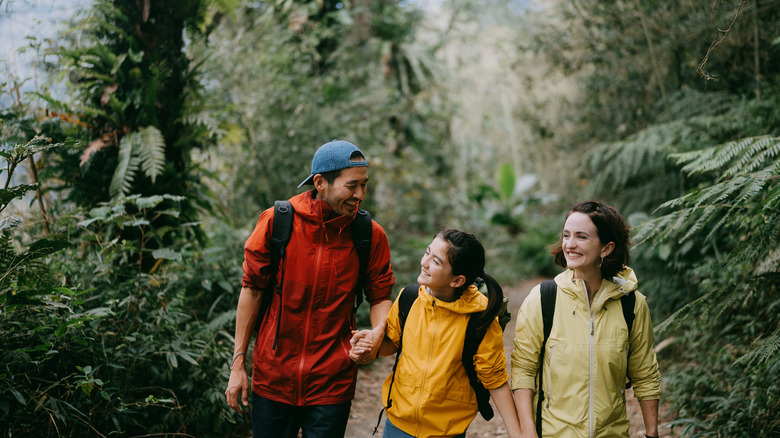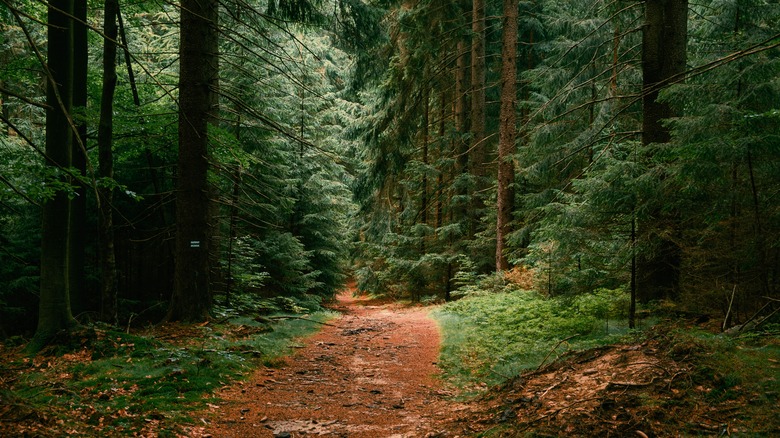Why Following A 'Social Trail' In A State Or National Park Is An Antisocial Behavior To Avoid
The National Parks Service reported 331.9 million visitors in 2024. This data comes from over 400 state and national parks in the country-wide network. Around 20,000 park rangers and employees manage these parks and are dedicated to environmental protection while ensuring the safety and enjoyment of all guests. To make their jobs easier, there are plenty of things we humble visitors can do to make their jobs easier and to ensure that the most beautiful places in America's state and national parks can be appreciated by others for generations to come.
While it may be fun to get off the beaten path when it comes to exploring our nation's natural wonders, it is best to stick to the path most followed — or at least the path intended for use. You can contribute to conservation efforts by staying on marked trails on your hikes and avoiding "social trails" at all costs. Social trails are unofficial pathways created by hikers who take detours or shortcuts off the designated path. This dangerous tourist activity is all too common, according to park rangers, to the point where social trails can start to look like official trails. Constant foot traffic can have detrimental impacts on the plants and wildlife in the area. And because they're not monitored or maintained like official trails, hikers risk getting lost or hurt. So always stick to the designated pathways and encourage your fellow hikers to do the same.
The impact of social trails is more severe than you think
Taking social trails is one of many mistakes tourists make when visiting national parks. And it may not seem like a big deal in the moment. However, if you lose your footing, injure yourself, get stuck, or get turned around and lost in an area of the park not meant for visitors, it's much more difficult for park rangers to reach you.
Visitors should also remember that designated trails are created for a reason and there is a lot of work that goes into making sure these paths are safe. For example, when creating a trail, experts need to conduct an environmental assessment to make sure they're as sustainable as possible. That is why the area around a trail is purposefully left untouched. It acts as a buffer zone to protect vulnerable plants and animals and their habitats.
A seemingly simple decision, like taking a shortcut through an unmarked path, can have detrimental effects; it can destroy habitats, cause unnecessary stress to wildlife, and result in animal displacement. All these factors can decrease these animals' chances of survival. By staying off social trails, you're helping to preserve the environment and protect all those who call it home.

